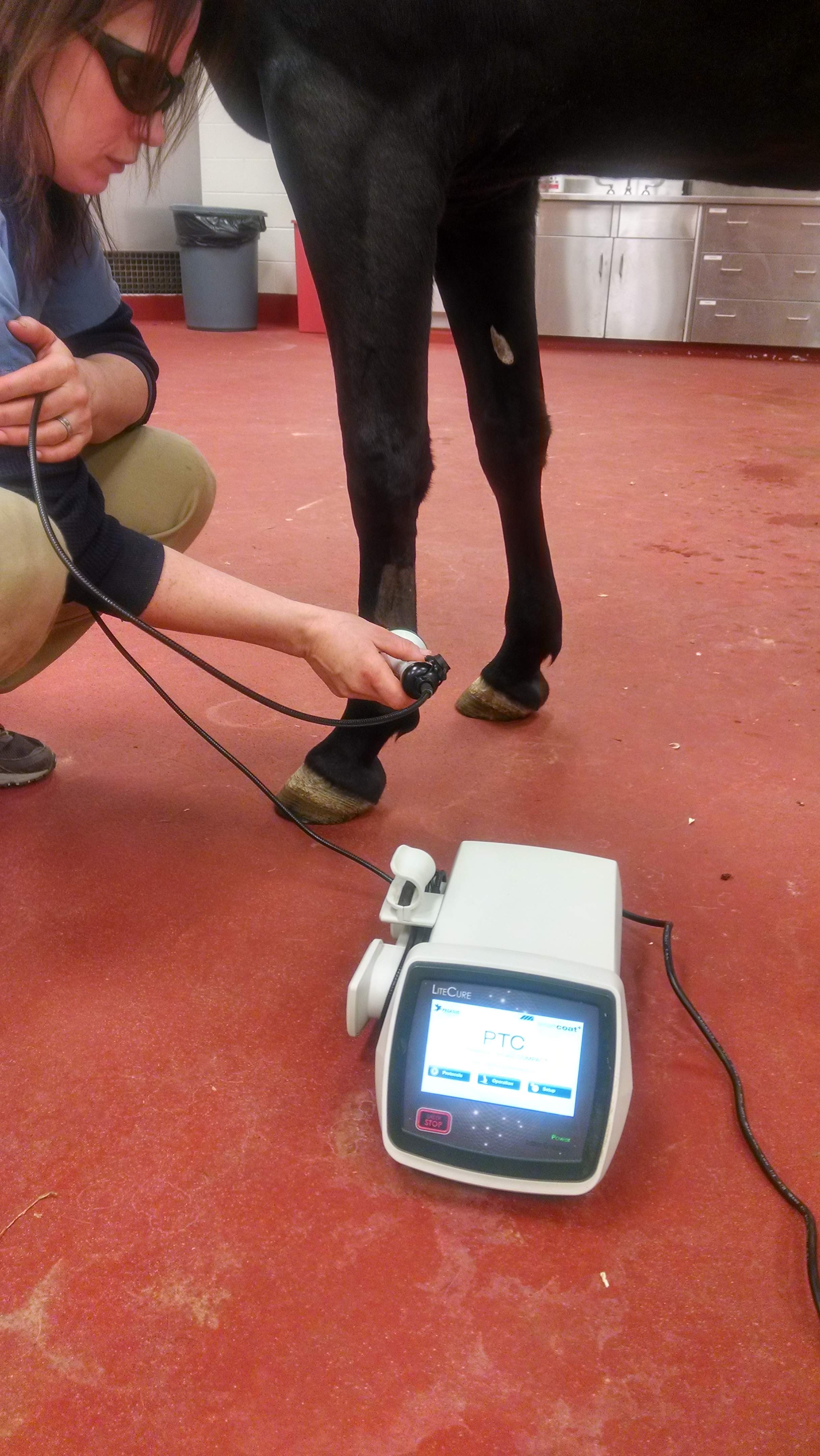Why Equine Therapy is Becoming a Preferred Choice for Emotional Health
Why Equine Therapy is Becoming a Preferred Choice for Emotional Health
Blog Article
Just How Laser Therapy in Equine Treatment Is Reinventing Vet Take Care Of Equines
Laser treatment has arised as a transformative approach in equine vet treatment, supplying a non-invasive service that expedites recovery and improves total health and wellness. The mobility and convenience of laser therapy devices better highlight their growing indispensability amongst vets.
Comprehending Laser Treatment

The modern technology behind laser treatment is grounded in the principle of photochemistry, where photons are soaked up by chromophores within cells, resulting in increased ATP manufacturing and modulation of reactive oxygen species (Equine Therapy). This, in turn, promotes cellular spreading, lowers inflammation, and accelerates recovery. Veterinary professionals utilize different sorts of lasers, consisting of low-level lasers (LLLT) and high-power Course IV lasers, depending upon the particular restorative purposes and the nature of the equine condition being dealt with
Different laser wavelengths and power setups are thoroughly picked to target numerous cells midsts and achieve desired professional outcomes. Safety and security methods are paramount, as incorrect usage can lead to thermal damages or suboptimal restorative results. Thus, a comprehensive understanding of laser therapy's devices and applications is essential for its effective implementation in equine vet method.
Benefits for Horse Health And Wellness
The myriad advantages of laser therapy for equine health and wellness include improved recovery, discomfort decrease, and enhanced mobility. This innovative therapy modality leverages particular wavelengths of light to permeate cells, promoting cellular function and promoting fast tissue repair. The non-invasive nature of laser treatment ensures very little stress and pain for the equine, promoting a smoother healing procedure.
Boosted recovery is one of the foremost benefits, as laser therapy accelerates cellular regrowth and collagen synthesis. Discomfort decrease is attained via the anti-inflammatory effects of laser therapy, which decreases swelling and minimizes the production of pain-inducing chemicals.
Improved mobility is one more essential benefit, particularly for performance and functioning horses. By decreasing swelling and pain, and boosting tissue repair service, laser therapy assists in bring back joint feature and muscular tissue flexibility. The advancing impact of these advantages is not only a quicker return to normal task yet likewise a total enhancement in the horse's quality of life. Therefore, laser treatment stands as a transformative device in modern-day horse vet care.
Common Problems Dealt With
Laser therapy has become a functional therapy alternative for a variety of common equine conditions. Amongst these, musculoskeletal injuries are particularly amenable to laser treatment. Equine Therapy. Soft cells injuries, such as tendonitis and tendon stress, take advantage of the anti-inflammatory and analgesic results of laser treatments, which accelerate healing and decrease discomfort. Additionally, laser treatment works for problems like osteo arthritis, where it helps minimize joint inflammation and promote tissue repair work.
Wound monitoring is one more location where laser treatment has shown considerable guarantee. Persistent injuries or slow-healing ulcers can be especially challenging in steeds, however laser therapy enhances mobile regeneration and enhances blood circulation, thus speeding up the recovery process. Laser treatments have actually been successfully utilized in taking care of hoof conditions such as laminitis and abscesses, alleviating article pain and advertising much faster recovery.

Modern Technology Behind Laser Treatment
Past the myriad conditions treatable with laser treatment, the modern technology itself qualities more detailed exam. At the heart of laser treatment is using details wavelengths of light to permeate cells and generate biological feedbacks. These wavelengths, usually ranging from 600 to 1000 nanometers, are uniquely soaked up by chromophores in the skin, muscular tissue, and other cells, instigating a cascade of cellular occasions.
Laser tools made use of in veterinary medicine frequently use low-level laser treatment (LLLT) or chilly laser treatment. Unlike high-powered medical lasers, these devices operate at reduced power degrees, enhancing healing advantages while reducing thermal damage. The energy from the laser light stimulates adenosine triphosphate (ATP) production, boosts mobile metabolic process, and accelerates cells repair work processes.

Success Stories and Study

Showcasing the tangible benefits of laser therapy, many success stories and study brighten its transformative influence on equine wellness. One such situation entails a thoroughbred racehorse suffering from chronic tendonitis. Conventional therapies generated very little improvement, yet after incorporating laser therapy right into the regimen, the equine exhibited considerable reductions in inflammation and pain within weeks, inevitably going back to affordable racing.
Another engaging example includes a dressage equine detected with serious pain in the back, restricting its efficiency. A veterinary team used low-level laser therapy (LLLT) to target the irritated locations, resulting in significant enhancement in flexibility and a significant decline in pain. Over numerous sessions, the equine regained its peak kind, showcasing the efficiency of laser therapy in resolving bone and joint problems.
In addition, a research performed at a leading equine facility examined 50 equines with numerous soft cells injuries treated with laser therapy. Full Report The outcomes were striking: 85% of the horses showed accelerated healing times and enhanced flexibility. These situations underscore the flexibility and efficiency of laser treatment in equine medicine, offering a non-invasive, scientifically-backed method to enhancing recovery and performance in horses.
Conclusion
Laser treatment is reinventing equine vet treatment by supplying a non-invasive treatment that speeds up recovery, decreases inflammation, and reduces discomfort. With its performance in treating an array of problems, from musculoskeletal injuries to chronic disorders like osteoarthritis, this innovation significantly improves equine health and wellness and movement. The transportability and flexibility of laser therapy better emphasize its transformative influence on vet methods, solidifying its function as an essential tool in modern equine healthcare.
Report this page